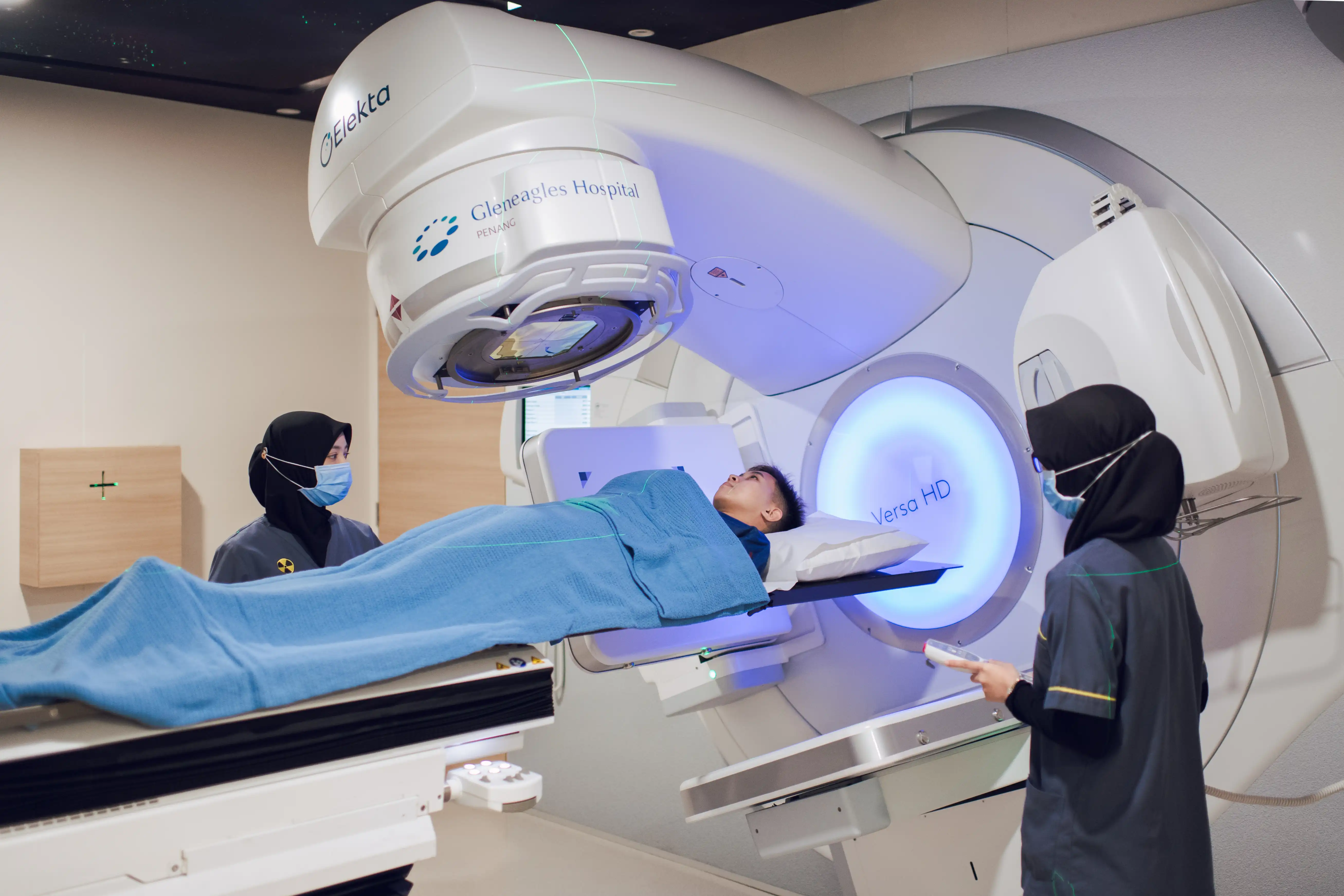High blood pressure during pregnancy, or preeclampsia, is a condition that affects some pregnant women. High blood pressure occurs when the blood pressure in the arteries builds up to levels greater than normal.
What is preeclampsia?
Preeclampsia is a complication of pregnancy characterised by high blood pressure, high levels of protein in the urine (proteinuria), or other signs of organ damage.
Preeclampsia usually begins after 20 weeks of pregnancy in women whose blood pressure was previously normal. Preeclampsia can lead to severe complications for both mother and baby. For the baby, it can reduce the amount of the mother's blood flow to the
placenta, causing the baby's growth to be restricted.
Early delivery of the baby is often recommended. Before delivery, preeclampsia treatment includes careful monitoring and medications to lower blood pressure.
What causes preeclampsia?
The cause of preeclampsia is unknown. Most women newly diagnosed with preeclampsia were not previously known to have high blood pressure (hypertension).
However, the following may play a role:
- Abnormalities in the development of the placenta early in pregnancy: If the placenta does not infiltrate sufficiently deep into the uterus and establish a healthy blood supply from the mother, it may not be able to provide appropriate nutrients and
oxygen to the foetus or itself as the pregnancy continues.
- Genetic predisposition
What are the risk factors for preeclampsia?
Several factors have been identified as risk factors for preeclampsia and they include:
- First pregnancy (excluding abortions and miscarriages)
- Chronic high blood pressure or kidney disease before pregnancy
- High blood pressure or preeclampsia in an earlier pregnancy
- Obesity
- Women older than 40 are at higher risk
- Multiple gestations (twins or triplets)
- Family history of preeclampsia
- Pregnancies with donor insemination or in-vitro fertilisation (IVF)
What are the symptoms of preeclampsia?
Many women with preeclampsia do not have distinct symptoms of hypertension and may not be aware of the condition. Therefore, prenatal visits to screen for hypertension are scheduled frequently.
Symptoms include:
- Sudden weight gain
- Swelling of the face or fingers
- Headaches
- Blurred vision or seeing spots
- Pain in the upper abdomen
- Nausea or vomiting
Signs of severe preeclampsia include:
- Abdominal pain
- Impaired liver or kidney function
- Seizures
- Fluid in the lungs causing difficulty in breathing
- Changes in baby's heart rate, indicating fetal distress
Women with preeclampsia are also likely to present with protein in their urine, abnormal liver enzymes and low platelet levels. Hence, your doctor would request urine and blood tests to look for these signs.
What are the complications of preeclampsia?
Preeclampsia, if left untreated, may cause complications for the baby in the womb, such as:
- Fetal growth restriction
- Premature delivery
- Stillborn
Extremely high levels of blood pressure in the mother that persist without medical care can damage organs, such as the kidneys, brain, eyes, and liver.
HELLP Syndrome
HELLP Syndrome is a rare disorder that occurs when there is damage to the liver and blood cells. It is a medical emergency characterised by:
- H: Haemolysis, where red blood cells that function to carry oxygen throughout your body break down
- EL: Elevated liver enzymes indicate liver damage
- LP: Low platelet count. Platelets help blood clot
Eclampsia
If the blood pressure rises to very high levels and persists, seizures or fits can occur. However, eclampsia can occur without any prior preeclamptic signs or symptoms.
Abruptio Placentae
In this condition, the placenta may tear away from the inner wall of the uterus before delivery. This can occur if the blood vessels leading to the placenta rupture due to high blood pressure and cause heavy bleeding.
Cardiovascular disease
Preeclampsia may increase your risk of developing cardiovascular disease (heart disease) in the future.
What are the treatment options for preeclampsia?
Severe preeclampsia can be fatal to the mother and baby. The most effective treatment for preeclampsia is to deliver the baby. After delivery, the mother's blood pressure usually returns to normal.
In general, if the mother is well nourished, follows the doctor's advice about bed rest, and if her blood pressure is controlled within normal range, the baby should not be affected.
At the hospital, the mother and baby would be monitored by regular blood pressure checks to monitor blood pressure levels. Urine samples would also be checked regularly to measure protein levels. Ultrasound scans would also be carried out to measure the
baby's growth, the amount of amniotic fluid, and blood flow through the placenta. Cardiotocography is also done to monitor the baby's heart rate.
Medications are also recommended as they help lower blood pressure, thereby reducing the risk of stroke in the mother.
How is preeclampsia prevented?
Routine visits to the doctor, starting early in the pregnancy are vital. Regular checkups may be able to detect changes in blood pressure before it leads to complications in the pregnancy. Severe cases usually involve those without planned regular antenatal
checkups who only visit their doctors late in the pregnancy.
Low-dose aspirin - When administered to women with moderate to high-risk preeclampsia, low-dose aspirin decreases the incidence of preeclampsia and related adverse pregnancy outcomes (preterm delivery, growth restriction) by 10 to 20 percent.
For women who have had preeclampsia before, it is crucial to be aware of the symptoms of preeclampsia and regularly monitor blood pressure during pregnancy. If you have other health issues, speak to your doctor in order for them to be well-managed to
avoid potential complications.
What are the other high blood pressure disorders during pregnancy?
Besides preeclampsia, three other high blood pressure disorders can occur when you are pregnant:
- Gestational hypertension - Typically begins after the 20th week. It does not cause high levels of protein in the urine or features of preeclampsia. Gestational hypertension usually resolves after delivery. However, it should be monitored
as some women with this condition may develop preeclampsia.
- Chronic hypertension - This high blood pressure disorder was already present before pregnancy or occurs before the 20th week.
- Chronic hypertension with superimposed preeclampsia - In this condition, high blood pressure was present before pregnancy. However, the condition worsens with increasing amounts of protein in the urine, and the mother develops signs
and symptoms of preeclampsia.
What is postpartum preeclampsia?
Postpartum preeclampsia is similar to preeclampsia but starts only after your baby is delivered. It usually begins within 48 hours of giving birth until 6 weeks after delivery. Symptoms of postpartum preeclampsia are similar to preeclampsia.
References
- National Health Services. Pre-eclampsia. Available at: https://www.nhs.uk/conditions/pre-eclampsia/ [Accessed on 12 September 2022]
- August P and Sibai BM. Preeclampsia: Clinical Features and diagnosis. In: UpToDate, Post TW (Ed), UpToDate, Waltham, MA. [Accessed on 12 September 2022]
- Norwits ER. Patient Education: Preeclampsia (Beyond the Basics). In: UpToDate, Post TW (Ed), UpToDate, Waltham, MA. [Accessed on 12 September 2022]










-yeoh-chee-lima51b01d7-09b0-4e11-a0a5-ce3c9ea5de79.jpg?sfvrsn=615d491f_6)


